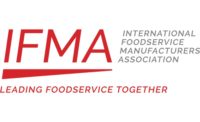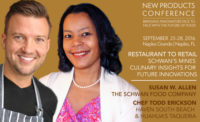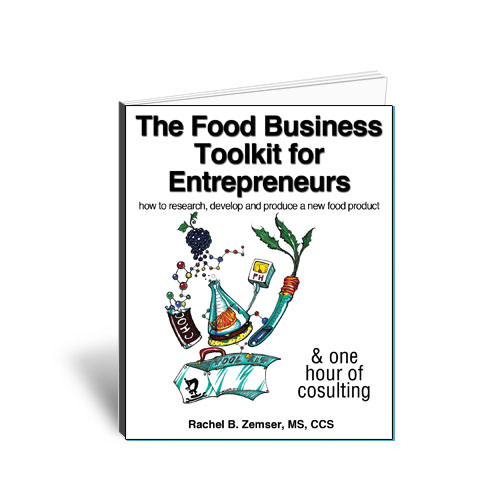STRATEGY SERIES: WHERE R&D MEETS FOODSERVICE
Foodservice Accounts: Call on Front-End Marketing, Insights and Culinary
Pitching a new product to foodservice? Engage with customers at the front end of this process

PHOTO CREDIT: sanjeri / Getty Images
Editor’s Note: Although there may be a pandemic-related slowdown, there’s no stopping new product development for the commercial and non-commercial foodservice sectors. To help readers with new product development strategy, Prepared Foods asked Jeff Miller, founder and CEO of Cutting Edge Innovation, to create a thought leadership series connecting R&D strategy to foodservice sales. Cutting Edge Innovation advises on foodservice strategy, sales, business development, and innovation. Miller also created an online course, “Turbocharge Your Foodservice Sales.”
Miller has more than 20 years in the food and beverage industry and most recently was vice president and executive chef at Dunkin' Brands, Inc., one of the world's leading franchisors of quick-service restaurants with over 20,000 locations in more than 60 countries. In this capacity, he led a team of 22 chefs, food scientists, bakers, and coffee experts. Miller led global innovation and product development for all Dunkin’ and Baskin-Robbins product categories.
Here is the fourth installment in a six-part series.
Welcome to this series where we cover the most common mistakes suppliers make when calling on national foodservice accounts. This month we’ll discuss mistake No. 3, which is, “Not building relationships beyond purchasing.”
I have a common conversation with potential clients or people who want to take my course on growing foodservice sales. They say they "know" foodservice well, but still need help. They can’t quite figure out how to grow, where to focus or even how to start.
Underperforming in foodservice is usually due to a lack of strategy. Many companies take a “Ready, Fire, Aim” approach, which rarely works. Even if this tactic does work with one customer, they can’t seem to translate that success to other targets. Additionally, many companies do not spend enough time understanding their value proposition, product or brand differentiation, and how to do their homework on key targets.
In this initial conversation, I’m usually told by the person I’m speaking with that they have a great deal of experience in foodservice. Many times, upon further discussion, that person only has worked in general distribution or a small segment of the industry and tended to focus on relationships with purchasing. They have very little understanding of (1) how products get on the menu at large chains and/or (2) the role of a world-class supplier in this process.
For this reason, prospective manufacturer-suppliers tend to over-focus on purchasing and supply chain as their best entry point (to simplify thing. In the rest of the article I’ll reference “purchasing” to cover all of the titles around supply chain).
Purchasing: Not Quite the Right Choice
Purchasing is a vital role in the foodservice industry and an incredibly important part of a complex sale. I worked in purchasing for years earlier in my career at a major foodservice brand as well as a small regional specialty foods distributor.
I can tell you first-hand that it can at times be a thankless and challenging role. You either have too much product, or not enough; and your focus is on reducing costs and managing stock and supply on time, and continuing to find ways to add value in the go-to-market process. No one calls you when you’re in purchasing to tell you that everything is going fine and that they hope you have a stress-free day. They often call with a problem. A truck is late, a production run had an issue, a franchisee didn’t get their delivery, costs went up unexpectedly, or leadership wants to move up a product launch with zero lead time.
Although purchasing is an incredibly important function, it’s a mistake for prospective new vendors to maintain relationships only in purchasing, or to focus on purchasing as the first entry point.
Think about it. It’s hard to add value and set your company apart from others if you only speak with the purchasing function. It means you’re limiting your ability to be involved in earlier decision making and the starting points for new products to be introduced. Essentially, you’ve waited until the customer has made all of their decisions, and then you hope that at the very end of the process they’ll chose your product. Usually at this point you’ve done little to differentiate yourself and you’re competing only on price.
Where New Product Ideas Start
If you want to truly excel in foodservice you have to create relationships across the “go-to-market” process. It’s extremely important to engage with the customer at the front end of this process. This is where ideas start! Generally, you begin with insights and marketing to show the value of your product and the consumer need you are solving—as well as the trends aligned with your products.
It is imperative to have the right support for these ideas, as well as products in application that make sense for your target customer. You have to build in your brand or product differentiation early on so that you set yourself apart from your competitors. It is your role as a world class supplier to give your target customer all of the tools and data they need to sell the idea internally across their cross-functional process.
As mentioned in previous articles in this series, you have to ensure you’ve done your homework on the chain to understand a variety of their strategies and challenges. You need to visit the restaurants in order to understand their operations as well and ensure your products and solutions can be implemented.
Focusing on the front end of the innovation to market process helps you better align with ideas going in the top of the innovation funnel. It helps you be seen as a trend leader and partner who brings relevant concepts early on. You then get the opportunity to see that concept through the entire process if it passes all of the gates.
Once you’ve developed relationships up front with marketing, insights and culinary, you then earn the right to get introduced to purchasing and other functions like operations who take lead further on in the go-to-market process. This is truly creating multiple relationships on a cross-functional team to help with a complex sale.
If you take the time to build relationships outside of purchasing, you’ll improve sales pipelines and better understand the foodservice industry as well as your customer’s internal go-to-market process.
Jeff Miller is Founder and Co-CEO of Cutting Edge Innovation and creator of the Turbocharge Your Foodservice Sales online course.
Access the third installment in this series.
Access the second installment in this series.
Access the first installment in this series.
Learn more about Cutting Edge Innovation.
Looking for a reprint of this article?
From high-res PDFs to custom plaques, order your copy today!






